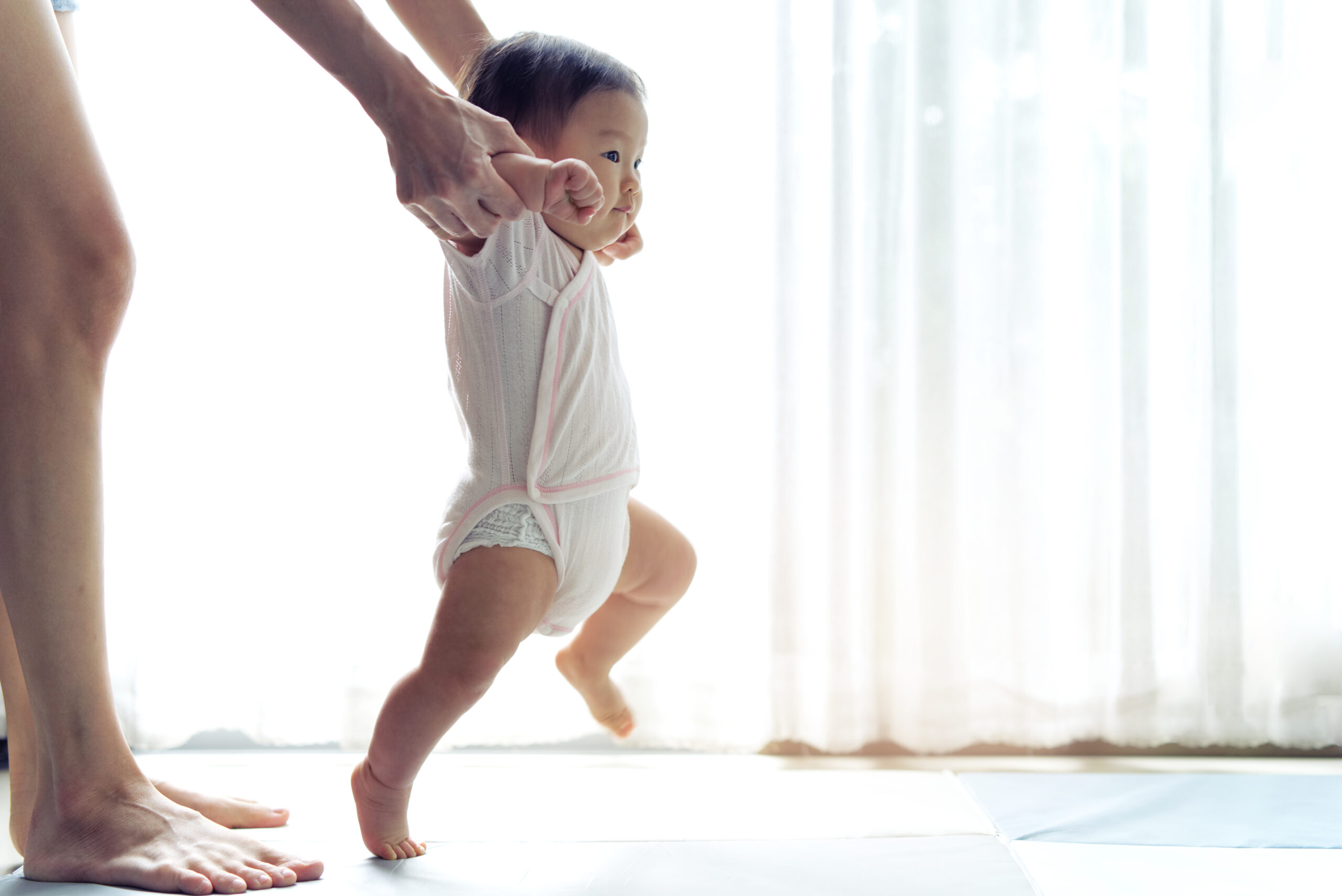Taking the time to simply watch an infant is amazing. There is so much going on in that little body lying there squirming, smiling, crying, and struggling against gravity to simply lift up their arm and head. This looks so simple, so basic, but it’s really a bonanza of exploring and learning about the world around them. How does this body move? How does it not move? What has worked to get basic needs met? How can a baby keep that familiar face and voice smiling down at them?
As occupational therapists, we’re often asked what does ‘occupation’ have to do with infants and children? What is an infant or child’s occupation?’ A child’s job is to play and learn daily living skills that will help them succeed in school, at home, and on the playground. For an infant, it begins with integrating both sides of the body, developing eye hand coordination, and achieving an upright body orientation.
Eye hand coordination starts developing from day one, as an infant begins to focus and track stationary and moving objects in their environment. The growing understanding and control of their bodies facilitates coordination of vision with reaching, grasping, and shaking objects. Their eyes and hands are beginning the life long, never ending process of learning and doing.
Essential to this development (and to the thinking of pediatric occupational therapists) is sensory processing. Sensory processing is defined on one of my favorite OT websites, the STAR Institute, as “…the way the nervous system receives messages from the senses and turns them into appropriate motor and behavioral responses. Whether you are biting into a sandwich, riding a bicycle, or reading a book, your successful completion of the activity requires accurate processing of sensation.” Sensory input is taken in through the five senses, i.e. vision, touch, hearing and the ‘hidden senses’ proprioception and vestibular, which I call the movement senses. For an infant, accurate processing of sensory input is essential as they gain confidence through successful attempts at sucking and holding a bottle, grasping and shaking a rattle, or rolling from their back to their belly.”
In this lecture–should we say ‘question and answer time’ instead– we will explore different exercises that enhance eye hand coordination and sensory processing. We will also teach you how to analyze and break down complex tasks so you can better help your little ones when they get frustrated with a seemingly simple task.




